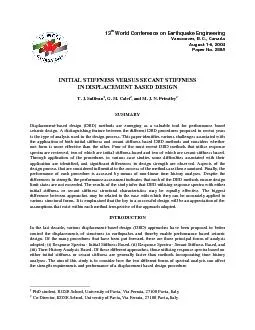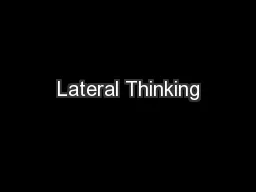PDF-5. SEAOC Recommended Lateral Force Requirements and Commentary, 1999,
Author : liane-varnes | Published Date : 2015-10-18
Table 5 Maximum storey drift and ductility values obtained from the timehistory analyses of the case studies for each DBD method EQI EQIV Method Storey Drift Ductility
Presentation Embed Code
Download Presentation
Download Presentation The PPT/PDF document "5. SEAOC Recommended Lateral Force Requi..." is the property of its rightful owner. Permission is granted to download and print the materials on this website for personal, non-commercial use only, and to display it on your personal computer provided you do not modify the materials and that you retain all copyright notices contained in the materials. By downloading content from our website, you accept the terms of this agreement.
5. SEAOC Recommended Lateral Force Requirements and Commentary, 1999,: Transcript
Download Rules Of Document
"5. SEAOC Recommended Lateral Force Requirements and Commentary, 1999,"The content belongs to its owner. You may download and print it for personal use, without modification, and keep all copyright notices. By downloading, you agree to these terms.
Related Documents













